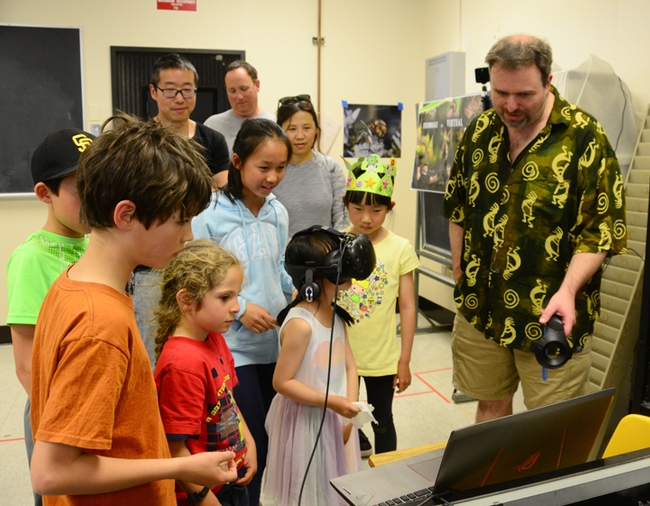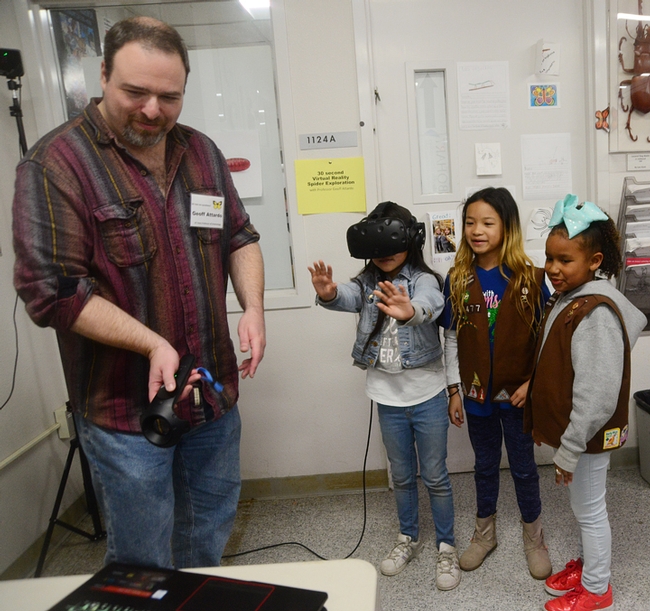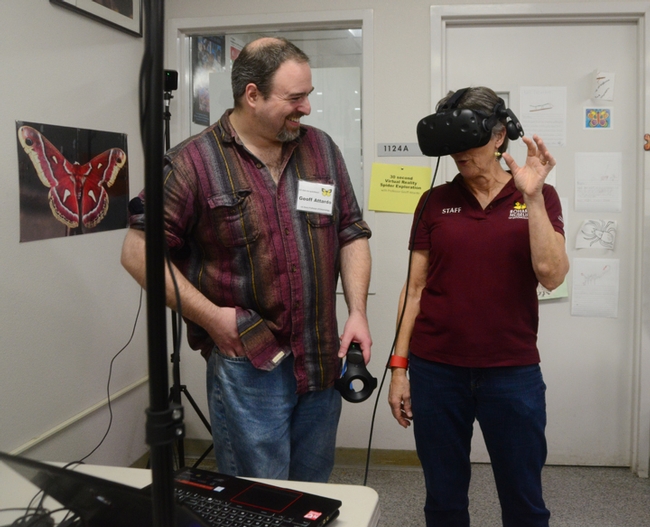- Author: Kathy Keatley Garvey
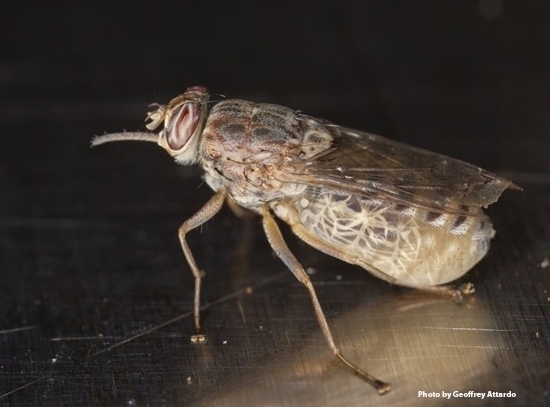
Yes? Then you'll want to attend the Science Café presentation on Wednesday, June 7, when medical entomologist and tsetse expert Geoffrey Attardo of the UC Davis Department of Entomology and Nematology will discuss “Got Milk? The Evolution and Biology of the Lactation in the Tsetse Fly.”
The event, set for 5:30 p.m., in the G Street Wunderbar, 228 G St., Davis, Calif., is free and open to the public. Jared Shaw of the UC Davis College of Letters and Science will host the presentation.
“It is actually going to be a very basic talk aimed at lay audiences and kids,” Attardo says. “I'll be talking about my background, how I became an entomologist and how I ended up working on tsetse flies. Then I am going to discuss the life history of tsetse flies, where they can be found, why they are of medical importance and how their reproductive biology differs so dramatically from other flies that people are familiar with. My plan is to go over their reproductive cycle, how they develop intrauterine larvae, the reproductive adaptations that allow them to perform this feat and then go over what we know about tsetse milk secretions and how they compare to mammalian milk in terms of nutritional content.”
“The aim is for it to be very informal, with very little scientific jargon and to be discussion-oriented so that there is lots of questions and answers. I am also bringing some items from the lab that can be passed around the audience for show and tell (homemade tsetse cages, the blood feeding system we use to feed the flies and some tsetse flies preserved in alcohol).
Attardo focuses his research on numerous aspects of the physiology of tsetse fly reproduction, with the goal to identify and understand key aspects of its reproductive biology. He joined the UC Davis Department of Entomology and Nematology in 2017 from the Yale University School of Public Health, New Haven, Conn., where he researched tsetse flies in the lab of Serap Aksoy.
Attardo considers the tsetse fly "one of the champions of the insect world."
"In addition to being vectors of a deadly disease, Trypanosomiasis, these flies have undergone amazing alterations to their physiology relative to other insects," he says. "Some examples of this are their ability feed exclusively on blood, their obligate relationship with a bacterial symbiont, the fact that they lactate and that they give birth to fully developed larval offspring."
If you'd like scientific information on tsetse fly lactation, see Adenotrophic Viviparity in Tsetse Flies: Potential for Population Control and as an Insect Model for Lactation, co-authored by Attardo and published in January 2015 in the Annual Review of Entomology.
The UC Davis scientist was featured in a New York Times' article on tsetse flies on Feb. 12. Pulitzer-Prize winning science writer Natalie Angier penned the article, "Everywhere in the Animal Kingdom, Followers of the Milky Way" (subhead: "As scientists learn more about milk's evolution and compositional variations, they are redefining what used to be a signature characteristic of mammals.")
"Most female flies take a low-rent approach to parenthood, depositing scores of seed-sized eggs in the trash or on pet scat to hatch, leaving the larvae to fend for themselves," Angier wrote. "Not so the female tsetse fly. She gestates her young internally, one at a time, and gives birth to them live. When each extravagantly pampered offspring pulls free of her uterus after nine days, fly mother and child are pretty much the same size."
Then she quoted Attardo: “It's the equivalent of giving birth to an 18-year-old."
Attardo is also a talented macro photographer. He won the 2010 Fogarty Grantee Photo Contest with an image of a tsetse fly. The Yale School of Public Health magazine featured his images on “An Eye for the Tsetse Fly.” The Los Angeles Times published his remarkable video (in 2014) of a tsetse fly giving birth. Also, see his portraits of the tsetse fly on Live Science, published in 2014.
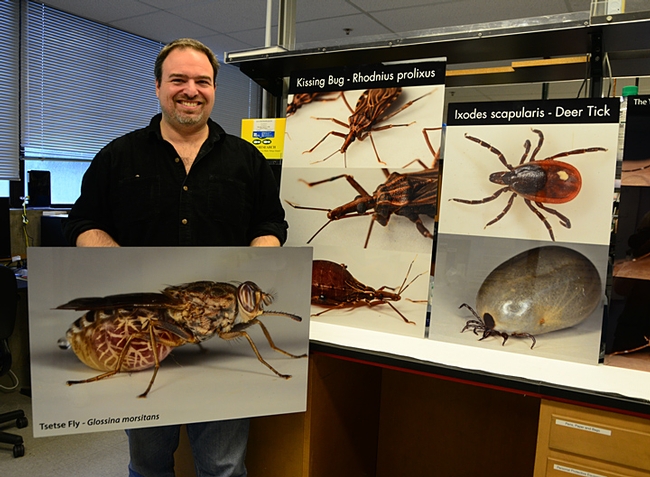
- Author: Kathy Keatley Garvey
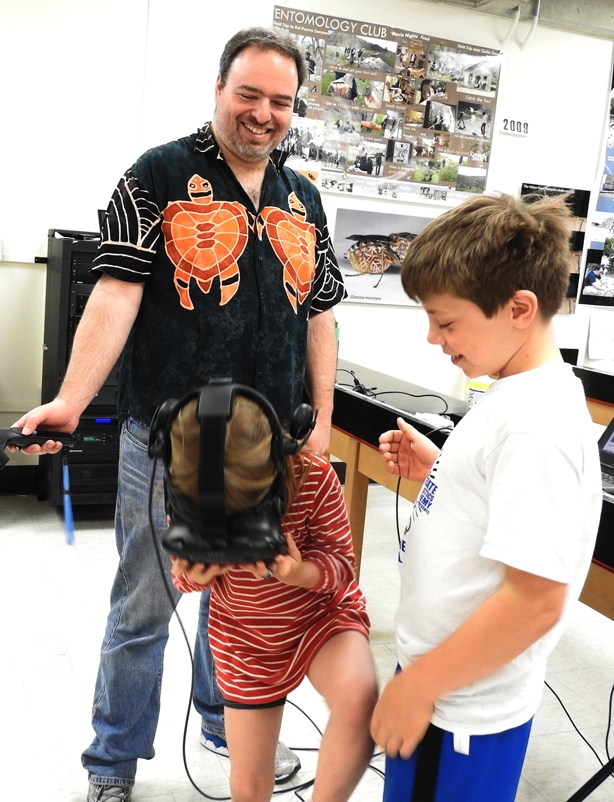
And that it did Saturday at the 105th annual UC Davis Picnic Day--especially at the second annual "Virtual Reality Bugs" display at Briggs Hall, the administrative home of the UC Davis Department of Entomology and Nematology.
Medical entomologist/geneticist Geoffrey Attardo, an assistant professor in the department who researches tsetse flies, mosquitoes and other vectors, demonstrated his program all day to hundreds of participants.
They marveled at the 40-foot-tall, three-dimensional insects and spiders. They chose what they wanted to see towering over them: a black widow spider, ant, beetle, grasshopper, damsel fly, cicada, cockroach, and a tsetse fly.
What's a picnic without bugs?
Sebastian Ehrlich, 9, and his sister Kamila, 6, of Davis, accompanied by parents Ethan and Carolina Ehrlich, were among the first in line.
They loved Virtual Reality Bugs.
"My kids' favorite part of Picnic Day was the VR," their mother said. "Oh how I'd love it if one of them at least became a scientist."
Paul McClelland of Sunnyvale, a UC Davis graduate in zoology (1983), and his wife, Marjirjam, also delighted in seeing the gigantic bugs--and the computer and display techniques that made the display possible.
"They didn't have that when I was going to school," McClelland quipped.
Attardo describes VR as a "computer-generated simulation used to simulate real or imagined environments."
"It immerses the user by stimulating visual, auditory and touch-based senses," he says. He presented a program on "Using Virtual Reality to Engage and Instruct: a A Novel Tool for Outreach and Extension," at the 2018 Entomological Society of America (ESA) meeting in Vancouver, B.C.
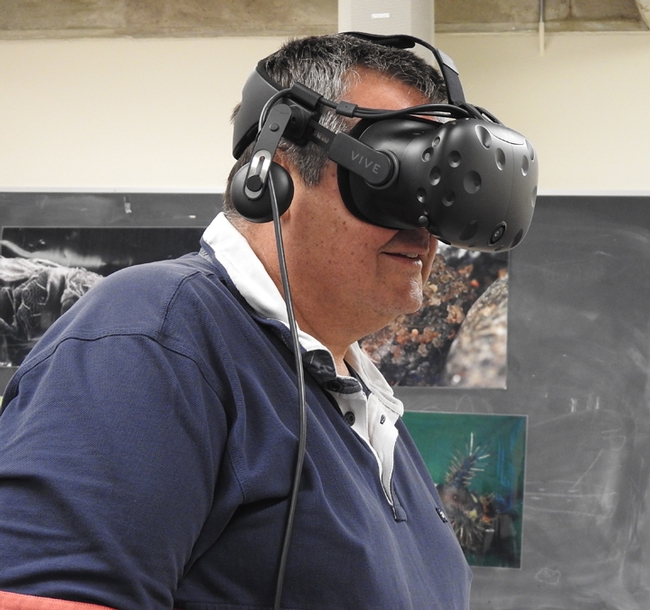
Attardo's sketchfab.com account is at https://sketchfab.com/models/263750e5a9c54c56a77d63ac06f2f317. His first model was a tsetse fly.
Attardo says that "VR has great potential as a new way to present entomological content including aspects of morphology, physiology, behavior and other aspects of insect biology. This demonstration allows users of all ages to view static and animated 3D models of insects and arthropods in virtual reality."
"This is accomplished by placing users in virtual spaces with content of interest and allows for natural interactions where users can physically move within the space and use their hands to directly manipulate/experience content. VR also reduces the impact of external sensory distractions by completely immersing the user in the experience. These interactions are particularly compelling when content that is only observable through a microscope (or not at all) can be made large allowing the user to experience these things at scale. This has great potential for entomological education and outreach as students can experience animated models of insects and arthropods at impossible scales."
In his presentation to ESA, Attardo commented: "This isn't your parents' virtual reality! Early computers and monitors could not produce the frame rate/resolution required. Early attempts at VR were heavy, awkward and motion-sickness inducing. Increased processing power, smaller computers and high resolution screens have solved these issues."
As McClelland said, "They didn't have that when I was going to school."
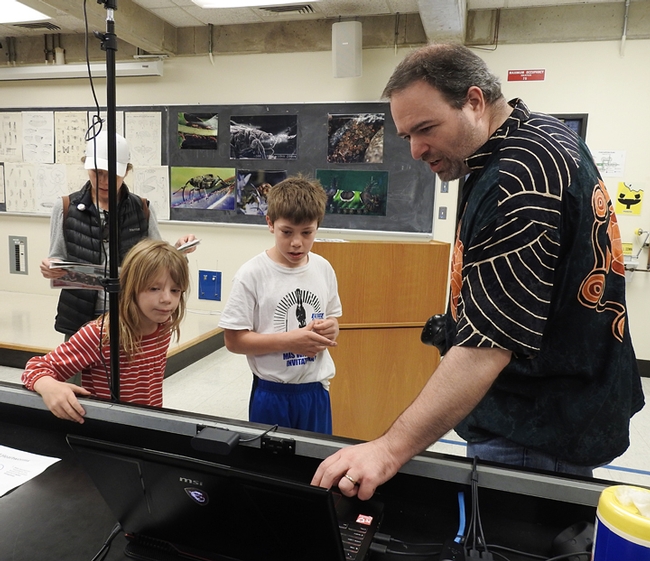
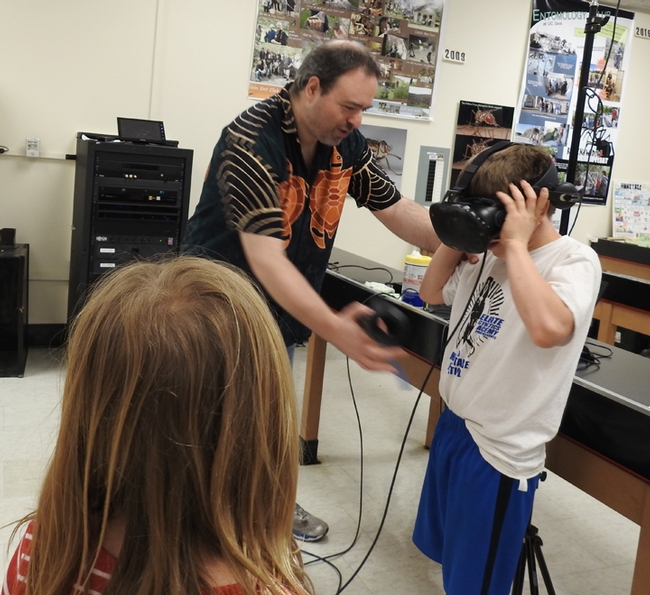
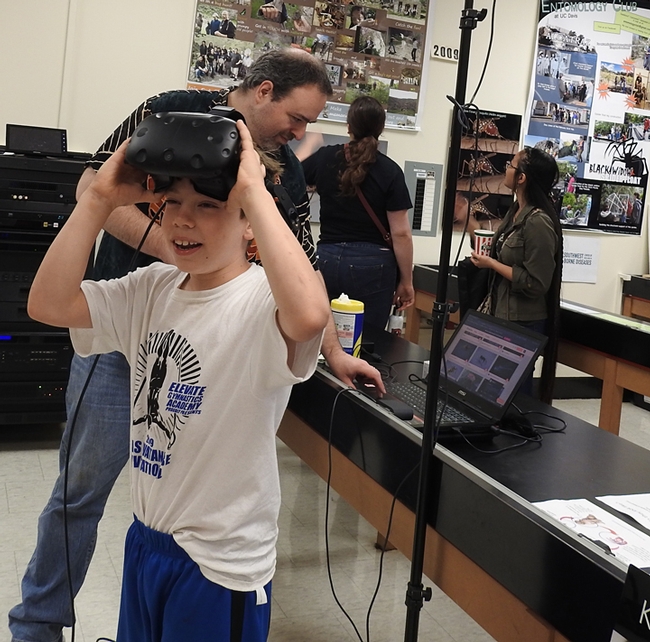
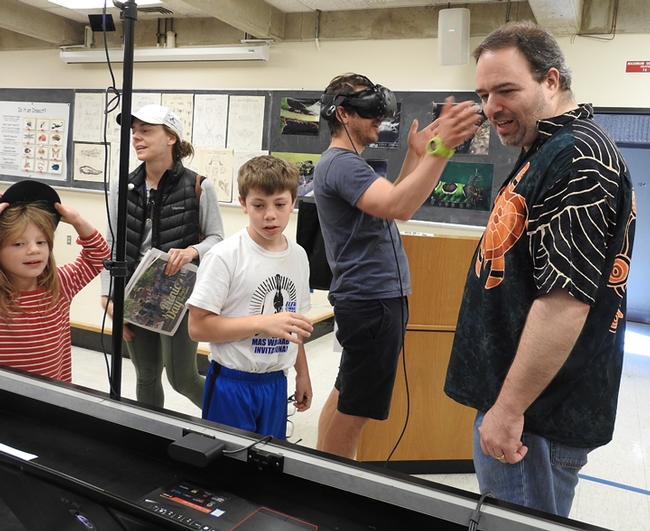
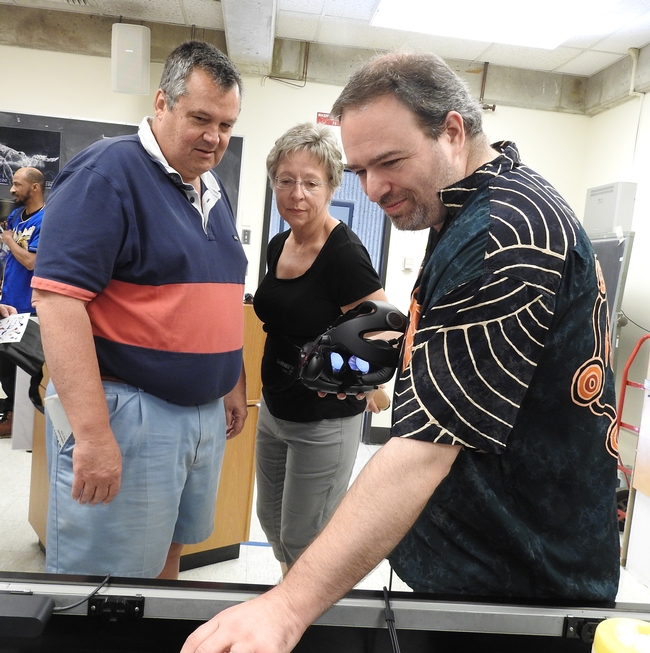
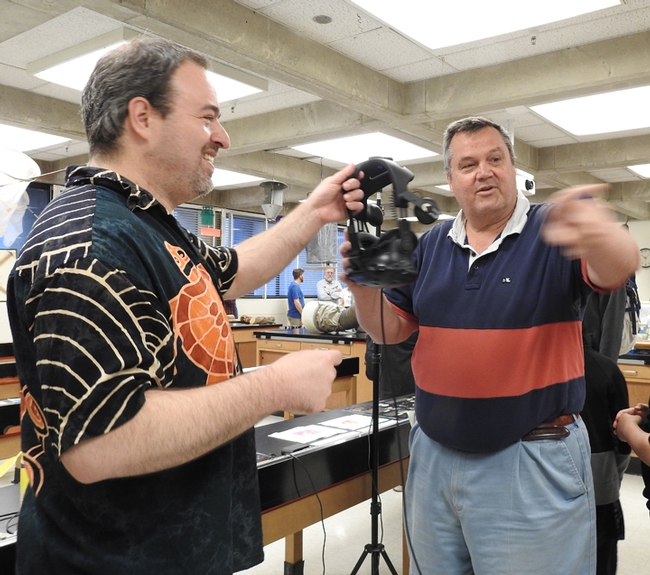
- Author: Kathy Keatley Garvey
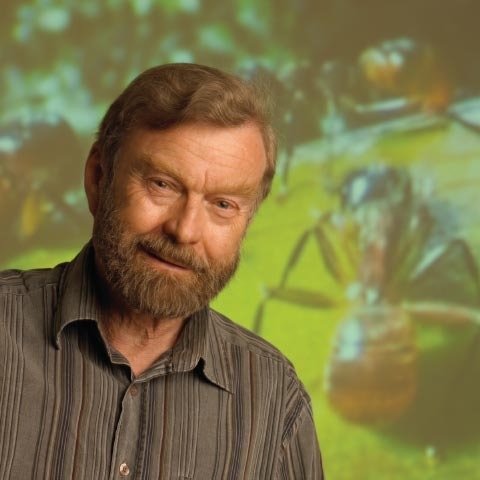
Bert Hölldobler, an evolutionary biologist based at Arizona State University who researches the evolution and social organization in ants, will discuss "The Superorganism: Communication, Cooperation and Conflict in Ant Societies" at the UC Davis Department of Entomology and Nematology's seminar on Wednesday, April 17 at 4:10 p.m. in Room 122 of Briggs Hall.
Hölldobler says that colonies that are "true superorganisms, show great cooperation among their nest mates and exhibit fierce aggression against neighboring conspecific colonies and display complex territorial strategies."
His experimental and theoretical contributions cover sociobiology, behavioral ecology, and chemical ecology. "His primary study subjects are social insects and in particular ants," according to Wikipedia. "His work has provided valuable insights into mating strategies, regulation of reproduction, the evolution of social parasitism, chemical communications, and the concept of 'superorganisms.'"
Hölldobler and co-author E. O. Wilson won the Pulitzer Prize for non-fiction writing in 1990 for their book, The Ants. They also co-authored The Superorganism: The Beauty, Elegance, and Strangeness of Insect Societies and Journey to the Ants: A Journey of Scientific Exploration. Hölldobler is also the author of The Leafcutter Ants.
Born in Bavaria, Germany on June 25, 1936, Bert studied biology and chemistry at the University of Würzburg. He wrote his doctoral thesis on the social behavior of the male carpenter ant and their role in the organization of carpenter ant societies.
Hölldobler began his academic career at the University of Frankfurt in 1971 as a professor of zoology. From 1973 to 1990 he served as professor of biology and the Alexander Agassiz professor of zoology at Harvard University, Cambridge, Mass. Hölldobler returned to Germany in 1989 to accept the chair of behavioral physiology and sociobiology at the Theodor-Boveri-Institute of the University of Würzburg.
From 2002 to 2008, Hölldobler was an Andrew D. White Professor-at-Large at Cornell University, Ithaca, N.Y. Since his retirement in 2004, he has worked at Arizona State University (ASU) as a professor and research scientist. A Regents' and Foundation professor, he is one of the founders of the Social Insect Research Group (SIRG) and of the Center for Social Dynamics and Complexity.
The seminars are coordinated by medical entomologist/assistant professor Geoffrey Attardo and take place at 4:10 p.m. every Wednesday through June 5 in 122 Briggs Hall. (See list of seminars)
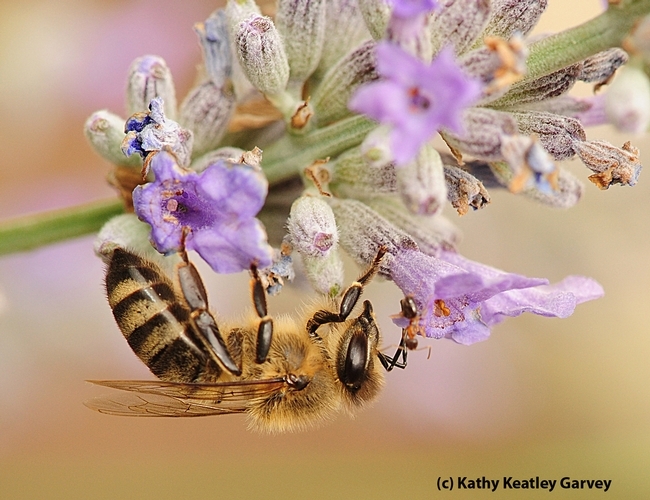
- Author: Kathy Keatley Garvey
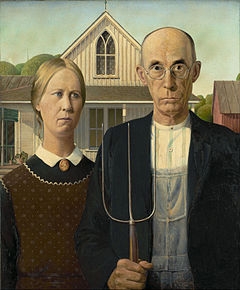
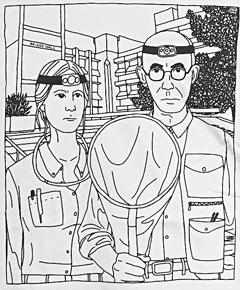
When the 105th annual UC Davis Picnic Day takes place Saturday, April 13, thousands of visitors will explore the campus. It promises to be informative, educational and entertaining.
But over at Briggs Hall, home of the UC Davis Department of Entomology and Nermatology, “special guests” will include bugs.
There will not only be cockroach races, maggot art, and displays of bees, ants, aquatic insects—and more!—but huge images of vectors, the incredible macro photography of medical entomologist/geneticist Geoffrey Attardo, assistant professor, UC Davis Department of Entomology and Nematology.
Virtual Reality Bugs
Attardo will be demonstrating “Virtual Reality Bugs” where youths and adults can watch 40-foot tall, three-dimensional insects and spiders. And in his medical entomology display, he will be exhibiting metal prints of vectors, including a tsetse fly, kissing bug, deer tick, mosquito, stable fly, cat flea and bed bug.
You wouldn't want to encounter a bed bug in your bed, or a flea or tick on your dog, or a mosquito on your arm. You may not even know what they look like up close. But with these images, you can see what's bugging you or your pets.
And with the Virtual Reality Bugs, participants can select what they want to see--or what's towering over them. The list includes a black widow spider, ant, beetle, grasshopper, damsel fly, cicada, cockroach, and a tsetse fly. Each person will be limited to about 30 seconds to accommodate the crowd.
The Briggs Hall activities run from 9 a.m. to about 4:30, while activities at the Bohart Museum of Entomology, will be offered from 11 a.m. to 2 p.m.
TheBohart Museum will focus on the theme, "Will Travel for Bugs: TheBohart Museum of Entomology's Collections from Around the World." It's nominated for a people's choice award, as is the honey tasting exhibit at Briggs Hall. Participants will sample meadowfoam, sage, cotton and buckwheat. QR codes will be at each site. (See news story about the activities at both sites.)
Vectors
But back to the vectors. Did you know that the Bohart Museum provides information or fact sheets on its website at http://bohart.ucdavis.edu/insect-info-sheets.html?
You can learn about some of the vectors that will dwarf you when you visit Briggs Hall.
For example, ticks!
"Ticks are blood-feeding external parasites of mammals, birds, and reptiles throughout the world," writes Lynn Kimsey, director of the Bohart Museum and UC Davis professor of entomology. "They are not insects rather they are arachnids, the same group that includes spiders and scorpions. There are two different groups of ticks, the hard ticks (Ixodidae) and soft ticks (Argasidae). Both are important vectors of pathogens to humans and animals throughout the world. Some diseases of current interest in the United States caused by tick-borne pathogens include Lyme Disease, Rocky Mountain Spotted Fever, and tick-borne Relapsing Fever (soft ticks)
"Many ticks seek hosts by 'questing.' Questing ticks crawl up the stems of grass or perch on the edges of leaves in a typical posture with the front legs extended. Certain chemicals, such as CO2, as well as heat and movement cause questing behavior. Ticks climb onto a potential host that brushes against their extended front legs. Once on a host hard ticks may feed for several days to several weeks.
And fleas!
"Fleas are bloodsucking parasites of humans, livestock and pets," Kimsey writes. "Only adult fleas feed on blood, which they obtain with their piercing/sucking mouthparts. Adult fleas blood feed on birds and mammals.Adult fleas are laterally flattened, wingless insects. They have a small eye spot on the side of the head, and a row of stout spines along the side of the head and the back of the thorax. Adult fleas travel rapidly by jumping, using their legs and a spring-like mechanism in the body. They are capable of spectacular leaps, covering distances up to one hundred times their body length
"The most common flea found on household pets, such as cats and dogs, is the cat flea, Xenopsylla cheopis."
Read the Bohart fact sheets and then check out Attardo's images.
EGSA T-Shirts
If you'd rather wear your bug on your shirt, the Entomology Graduate Student Association (EGSA) can oblige. They have scores of insect-themed t-shirts, ranging from beetles and honey bees to wanna bees. The newest t-shirts in the line-up include two designed by talented doctoral student/ant specialist Jill Oberski of the Phil Ward lab. One is a take-off of American Gothic, the 1930 painting by Grant Wood, except with entomologists holding a net in front of Briggs Hall, UC Davis campus, instead of the farmers holding a pitchfork in front of their farmhouse. The other Oberski t-shirt celebrates the 45th anniversary of UC Davis Picnic Day cockroach races. Roaches rock! Forensic entomologist Robert Kimsey, co-chair of the department's displays at Picnic Day, rears cockroaches in his lab, but on Picnic Day, they're ready to race! Doctoral candidate Brendon Boudinot, EGSA president and co-chair of the department's displays, says the roaches will race on a new racetrack.
Doctoral student/nematologist Corwin Parker of the lab of Steve Nadler, professor and chair of the UC Davis Department of Entomology and Nematology, also came up with a clever idea for a t-shirt. You know how cicadas can be REALLY loud? He drew one plugged into an amp. Now, that's REALLY loud! You can buy EGSA t-shirts at Briggs Hall on Picnic Day or order them online at https://mkt.com/UCDavisEntGrad/ after Picnic Day.
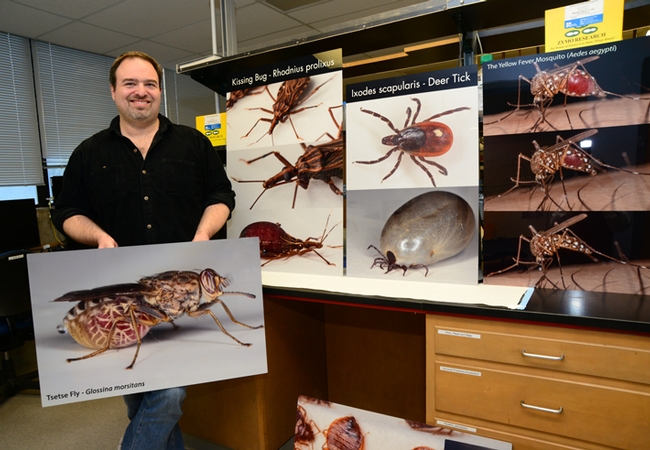
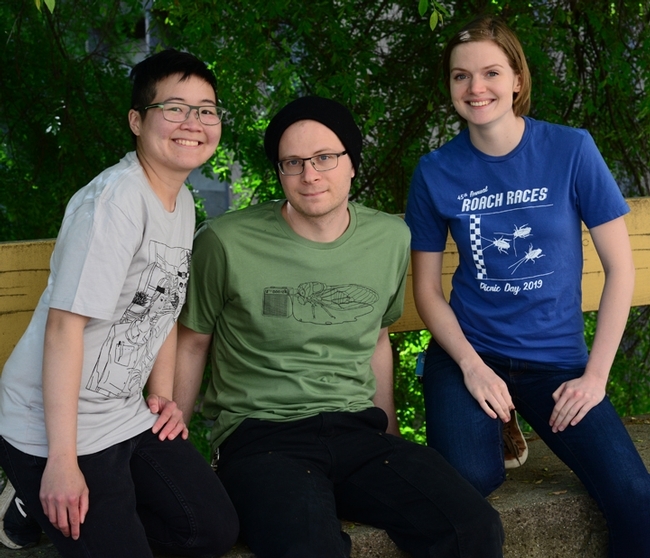
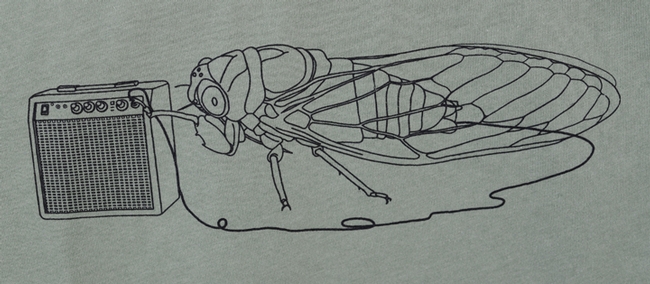
- Author: Kathy Keatley Garvey
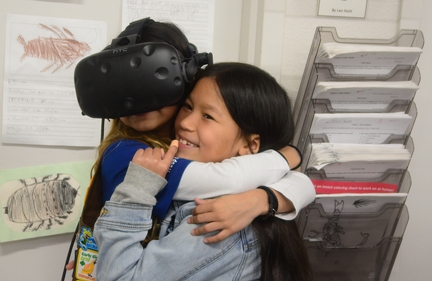
Be sure to head over to Briggs Hall on Saturday, April 13 during the 105th annual UC Davis Picnic Day to see or participate in medical entomologist/geneticist Geoffrey Attardo's virtual reality (VR) demonstration. It's free and family friendly.
Attardo describes VR as a "computer-generated simulation used to simulate real or imagined environments. It immerses the user by stimulating visual, auditory and touch-based senses."
In other words, VR is an interactive, three-dimensional, computer-generated experience. You'll enter the fascinating, breathtaking world of insects and arthropods on a scale you've never before imagined. Tiny critters that are easy to overlook can't be overlooked in the VR world.
Attardo, an assistant professor in the Department of Entomology and Nematology, drew crowds all day long at last year's "Virtual Reality Bugs" at UC Davis Picnic Day, and no doubt he'll do so again. Briggs Hall activities begin at 9 a.m. and conclude around 4:30.
Attardo presented a seminar titled "Using Virtual Reality to Engage and Instruct: a A Novel Tool for Outreach and Extension," at the 2018 Entomological Society of America (ESA) meeting in Vancouver, B.C.
"Recent developments in computer and display technologies are providing novel ways to interact with information," he told the ESA attendees. "One of these innovations is the development of Virtual Reality (VR) hardware. Innovations in hardware and software have made this technology broadly accessible with options ranging from cell phone based VR kits made of cardboard to dedicated headsets driven by computers using powerful graphical hardware. VR based educational experiences provide opportunities to present content in a form where they are experienced in 3 dimensions and are interactive."
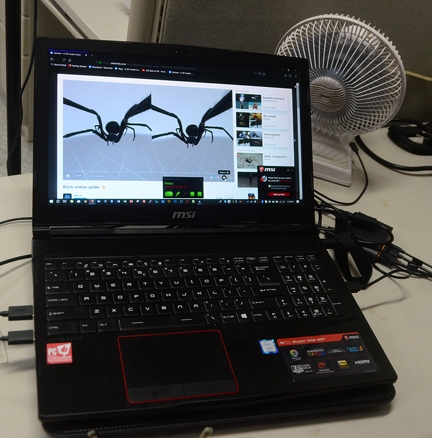
Attardo says that "VR has great potential as a new way to present entomological content including aspects of morphology, physiology, behavior and other aspects of insect biology. This demonstration allows users of all ages to view static and animated 3D models of insects and arthropods in virtual reality."
The system he uses? A HTC Vive driven by a VR ready laptop. You can see his three-dimensional insect models on Sketchfab.com, using the Firefox web browser. In addition, you can view the models in two dimensions on any computer with most web browsers.
In his presentation to ESA, Attardo commented: "This isn't your parents' virtual reality! Early computers and monitors could not produce the frame rate/resolution required. Early attempts at VR were heavy, awkward and motion-sickness inducing. Increased processing power, smaller computers and high resolution screens have solved these issues."
How does VR work? For software, you need a graphical engine to build a world, content for inclusion in the world, and interactivity, with the world responding to the user via artificial intelligence. You need headsets, your windows into the virtual world. Controls assist the user in interacting with the world.
Attardo says that VR can be used for surgical training, data visualization, engineering, and "making big things small and small things big." It can also be used for physical and psychological therapy, such as evaluation of cognitive function in Alzheimer's patients, anxiety reduction in dementia patients, reduction in pre-surgery anxiety,post-traumatic stress disorder (PTSD) therapy, and reduction in pain associated with dental procedures.
How can VR be used in education? At the ESA meeting, the UC Davis faculty member listed these six educational benefits:
- Reduces or eliminates distractions
- Experienced-based learning
- VR-based experiences facilitate better recall due to spatial associations
- Content is interactive and explorable at the student's pace
- Visual classrooms allow long-distance learning
- Engaging
He attributed "better recall to spatial associations" to a research paper, Virtual Memory Palaces: Immersion Aids Recall, by E. Krokos, et al., published in 2018 in Virtual Reality.
Yes, there are some negatives along with the positives. The system can be expensive, you can encounter potential technical issues, it's limited to available content, and you'll need multiple sets of hardware. Plus, content development software has a steep learning curve, he said.
Attardo joined the UC Davis Department of Entomology and Nematology in 2017 from Yale University School of Public Health, New Haven, Conn., where he served as a research scientist. A native of Poughkeepsie, N.Y., he received a bachelor's degree in entomology from the University of Massachusetts, Amherst, in 1994 and his doctorate in genetics from Michigan State University, East Lansing, in 2004.
At UC Davis, his lab focuses on aspects of the physiology of tsetse fly reproduction.
“As a scientist, I have taken my fascination with the magnifying things to the extreme in that my work tends to focus on the molecular biology underlying the physiology of insect adaptations," he told us in a 2017 interview. "The molecular adaptations are just as amazing as the morphological ones. However, they are even harder to visualize and explain to lay people. I enjoy illustration and artwork as well, so when it is not possible to take a picture of something I am working on, I try to create a visual representation of it.”
“I also really enjoy digital illustration and have recently gotten into 3D modeling. My first model is a tsetse fly for which I was able to use my macro photos to texture." See https://sketchfab.com/models/263750e5a9c54c56a77d63ac06f2f317
Attardo demonstrated his system at a recent Bohart Museum of Entomology open house, where participants of all ages engaged with three-dimensional gigantic spiders. Several members of a Brownie Girl Scout Troop from Vacaville giggled and held on to each other. Lynn Kimsey, director of the Bohart Museum, looked at the spiders, looked at them and said "I just want to collect them!"
